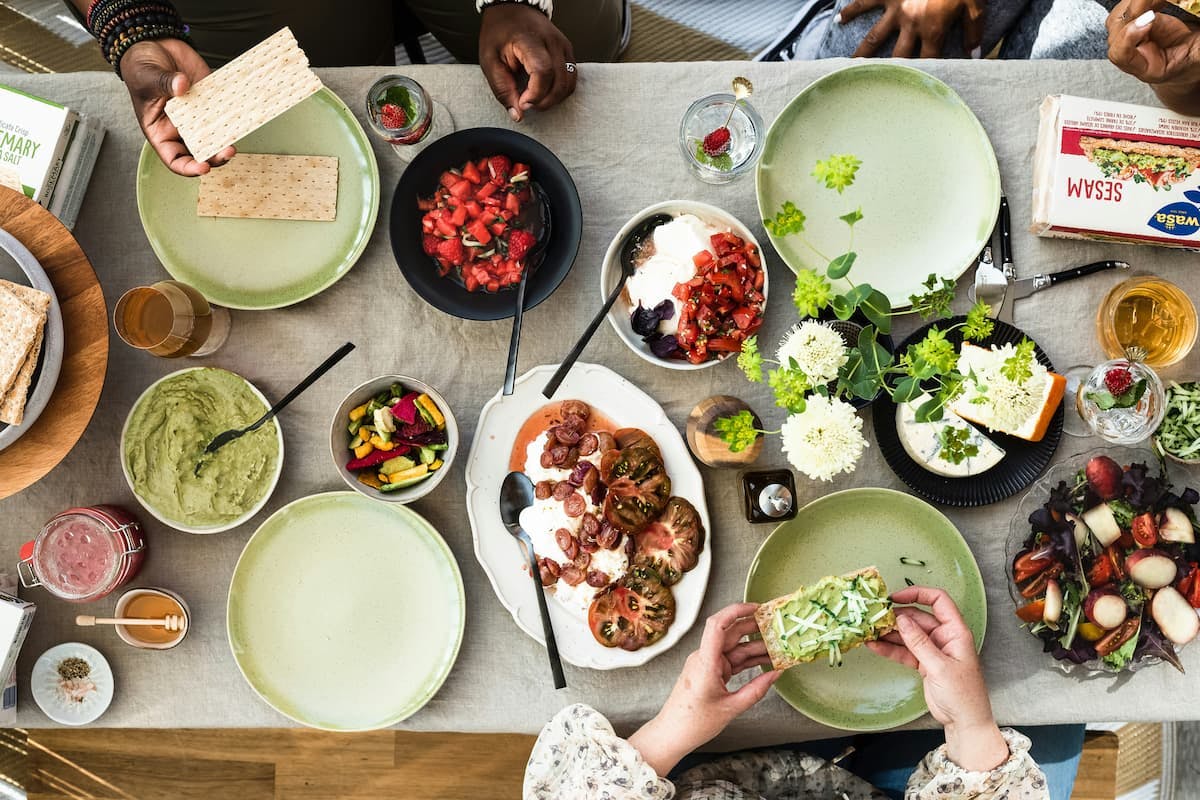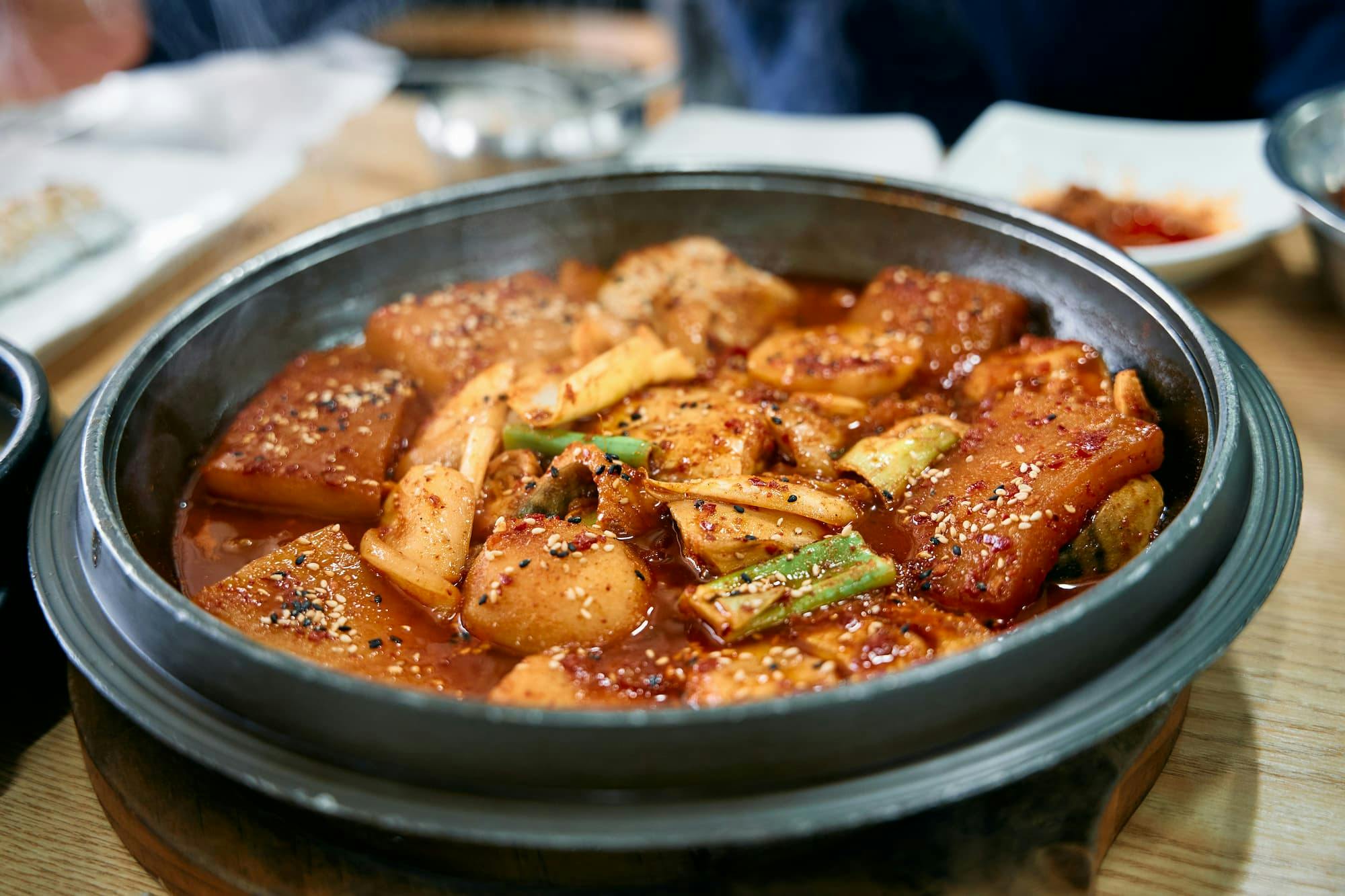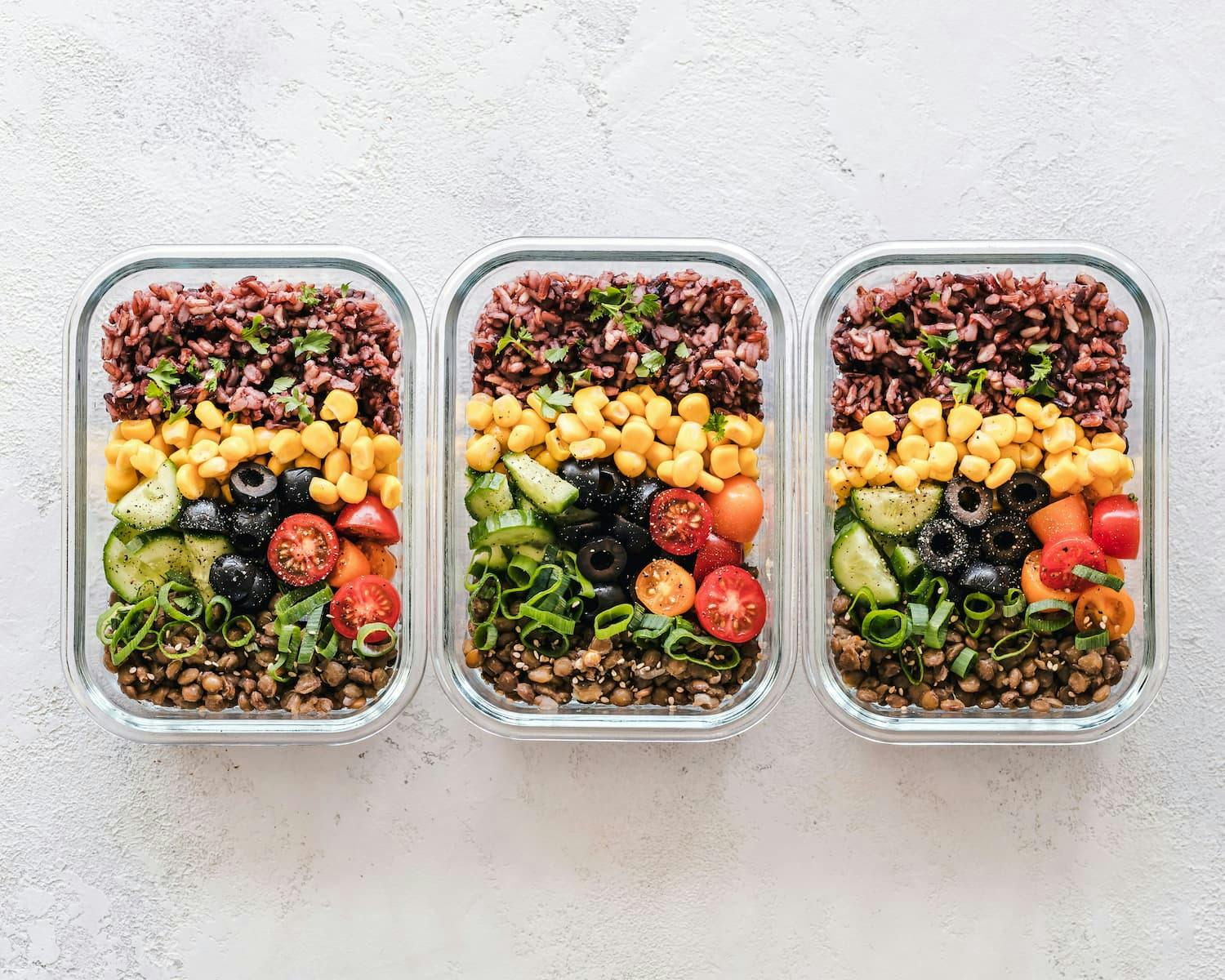
Corporate dining is a strategic workplace initiative that provides meals to enhance productivity, well-being, and culture, using methods like in-house cafeterias and online delivery. See how to create a positive employee experience through shared meals.
Creating a workplace where people feel energized, connected, and genuinely cared for isn’t easy.
You’re constantly balancing performance with well-being, and looking for meaningful ways to build a culture people want to be part of. That’s where corporate dining comes in—not just as a perk, but as a smart strategy to make work better.
From boosting productivity to turning lunch into a moment of connection— the way your team eats shapes how they feel and perform.
Whether you're supporting a tight-knit crew or a growing workforce, thoughtful, quality meals send a clear message: your people matter.
Here’s how to build the best corporate dining experience—one that drives engagement, supports wellness, and makes your company a place where people truly want to work.
What are the Benefits of Corporate Dining?
Food has always brought people together—and in the workplace, it does even more. A thoughtful corporate dining program isn’t just about feeding employees; it’s about fueling satisfaction, performance, connection, and a stronger culture. When meals are part of the workday, they create space for people to recharge, bond, and feel valued.

Here’s how the right food strategy can create real, measurable impact:
- Increased Workplace Productivity: On-site or pre-arranged meals reduce downtime, minimize distractions, and help employees stay focused and energized.
- Improved Health and Wellness: Healthy eating options at work support better energy levels, reduce sick days, and contribute to long-term well-being.
- Stronger Office Culture: Meals encourage informal interaction and collaboration, creating a more connected and communicative team environment.
- Attract and Retain Top Talents: employees consider free food a key factor when evaluating new job opportunities. Great meals can be a competitive edge in today’s job market.
Done right, corporate dining is one of the most impactful ways to improve employee experience.
Types of Corporate Dining
There’s no single approach to feeding your team—every workplace has its own rhythm, space, and culture. The good news? Corporate dining is more flexible and creative than ever.
Whether you're aiming to support daily lunches, celebrate milestones, or give your team more autonomy, there's a model that fits.
In-House Cafeterias
These are full-scale dining operations built directly into the office. Meals are prepared on-site by professional chefs, offering fresh, hot food daily.
In-house cafeterias typically provide multiple menu stations—like salads, hot entrées, and made-to-order options—and can accommodate various dietary needs. This model works best for large organizations with high headcounts, dedicated kitchen space, and the budget to support ongoing operations.
Corporate Catering
With corporate catering, meals are delivered in bulk by catering partners and served during meetings, training sessions, or company lunches.
You can schedule catering for recurring events or use it for one-off gatherings like celebrations and town halls. It’s a great way to offer professional-grade meals without building an on-site kitchen, and allows for planned variety while keeping things simple to manage.

Food Trucks
Food trucks offer a flexible and fun dining option for outdoor spaces or large office campuses. Companies can bring in rotating trucks that serve everything from tacos and burgers to vegan bowls and ethnic cuisine.
It’s perfect for special events, team-building days, or casual Fridays, and helps create a laid-back atmosphere employees look forward to.
Read More: Fuel Your Team's Success: The Ultimate Guide to Food for Work Meetings
Micro Markets
Think of micro markets as a 24/7 mini convenience store within your office. These self-serve stations are stocked with fresh meals, snacks, drinks, and sometimes even heat-and-eat options.
Employees can browse and buy anytime using a self-checkout system. They’re ideal for flexible workplaces with staggered shifts or teams that need quick access to food throughout the day.
Office Coffee and Snacks Bar
Simple, cost-effective, and always appreciated. A well-stocked coffee and snacks bar provides quick fuel for your team—helping people stay energized between meetings or during long afternoons.
You can keep it light with granola bars and tea, or go premium with espresso machines, fresh fruit, and healthy snacks. It’s an easy way to boost morale with minimal setup.

Pop-Up Restaurants
These temporary culinary experiences bring rotating chefs or themed menus into your office—turning lunch into an event.
Pop-ups can feature local restaurants, seasonal foods, or cultural cuisines and typically run for a day or week. They’re a great way to introduce variety, support local businesses, and break up food routines with something employees will talk about.
Online Ordering and Delivery
The most flexible, personalized, and scalable model. With this approach, employees order meals individually via a digital platform, and food is delivered directly to the office (or even to remote workers at home).
It supports dietary preferences, gives employees control over what and when they eat, and removes the admin burden from internal teams. This model is ideal for hybrid workplaces, fast-paced environments, or companies looking for high customization with minimal coordination.
Read More: What's the Best Food Delivery App with No Shipping Fee?

Which Type of Corporate Dining Should I Choose?
The right choice depends on what your people need and what your workplace can support. It’s about aligning your food strategy with the culture you’re building and the experience you want to offer.

Here are the key factors to consider:
- Company size: A small team might benefit most from online ordering, while a large enterprise could justify an in-house cafeteria or rotating food trucks.
- Budget and resources: Whether you’re working with a lean monthly meal allowance or have room for premium catering, there’s a dining model to match.
- Employee preferences and dietary needs: Flexibility is key. Make sure your plan includes options for vegetarians, vegans, gluten-free, and allergy-sensitive diets.
- Office layout and facilities: Do you have space for a full kitchen or cafeteria? If not, options like micro markets, pop-ups, or online food delivery can still deliver a high-quality experience.
- Your company’s goals: Are you trying to create a casual, communal vibe? Prioritize wellness? Offer a high-end culinary experience? Let your purpose shape your plan.
A thoughtful dining program can lift morale, build connection, and drive day-to-day performance in ways that go far beyond the food itself.
Key Elements of a Successful Corporate Dining Strategy
Once you’ve chosen the right type of corporate dining, it’s time to make it work. Here are the foundational elements that turn a meal program into a meaningful part of the employee experience:
1. Prioritize Nutrition and Variety
Healthy eating isn’t just a trend—it’s a driver of energy, focus, and long-term well-being.
Offer meals that are both nourishing and inclusive, with options for every lifestyle and dietary need, including vegetarian, vegan, gluten-free, and allergen-aware choices. Variety keeps things interesting and makes sure no one feels left out.
2. Explore the Dining Experience
Food can be functional—or it can be a moment of joy in the middle of a busy day. Think beyond the plate: the presentation, the setting, and even the delivery experience all contribute to how your team feels.
Whether you’re using corporate catering, in-house dining, or delivery, elevate the experience so it feels intentional, not just transactional.
3. Promote Social Connection
When people eat together, they connect—formally or informally. Encourage shared meals, team lunches, or open spaces where people can gather around food.
It’s a simple but powerful way to build community and improve employee engagement without adding extra meetings to the calendar.
4. Collect Employee Feedback
Your team’s needs will evolve, and so should your meal program. Use regular feedback—quick surveys, informal chats, or digital tools—to learn what’s working and what’s not. Employees are far more likely to appreciate a food program that reflects their input.
With these elements in place, your corporate dining strategy becomes more than a logistical solution—it becomes a reflection of your culture, your values, and your investment in your people. Next, let’s look at the option that’s rising to the top for modern teams.

Online Ordering Stands Out as the Best Corporate Dining
When speed, flexibility, and personalization matter, online food ordering rises to the top. It’s become the go-to solution for modern workplaces—especially those navigating hybrid schedules, varied preferences, and fast-paced routines.
Why? Because it adapts to how people actually work today. Rather than forcing one-size-fits-all meals or rigid lunch schedules, online ordering gives your team freedom, variety, and simplicity—all in one.
Here’s what makes it the best corporate dining option for many organizations:
- Flexibility and Convenience: Employees choose meals on their own terms, whether they’re in the office, working remotely, or in between meetings.
- Individualized Choices: No more compromising on taste or dietary needs. Everyone gets food they’ll actually enjoy, tailored to their lifestyle.
- Time Efficiency: Skip the long lunch breaks and off-site trips. Meals arrive when and where they’re needed, without interrupting the flow of the workday.
- Wide Range of Options: From healthy bowls to comfort food, your team gets access to a variety of local restaurants and global cuisines.
- Diverse Local Flavors: Support your community by tapping into local eateries. It’s a great way to bring regional character into the workplace.
- Dynamic Menu Options: Rotating menus and seasonal specials keep things fresh and exciting—so lunch never feels stale.
- Simplified Ordering and Payment: Platforms like Picnic make the admin side effortless, with centralized billing, budget controls, and seamless user experience.
For companies looking to offer the best corporate dining experience without building a kitchen or managing logistics, online ordering is a clear winner. And the right partner can make it even easier—which brings us to your next step.

But, What is the Best Office Meal Delivery?
If you’re looking for a corporate dining company that delivers flexibility, variety, and zero hassle—Picnic is built for you.
Picnic makes office meals easy to manage and enjoyable for everyone. With features like group ordering, built-in stipend management, and partnerships with local restaurants, Picnic handles the logistics while you focus on keeping your team engaged and productive.
Whether you’re supporting in-office staff, hybrid teams, or remote employees, Picnic adapts to your setup and scales with your needs—whether it’s a one-off lunch or a full dining program.

- Team-Wide Ordering Made Easy: Coordinate meals for multiple people in just a few clicks.
- Local Restaurant Variety: Access a wide range of cuisines and support small businesses at the same time.
- Built-In Stipend Management: Set spending limits and meal allowances without extra admin work.
- Reliable, On-Time Delivery: Meals arrive when and where they should, with minimal disruption to your team’s workflow.
Let Picnic Handle your Dining
Picnic helps you create a workplace people genuinely love.
When meals are thoughtful and well-managed, they do more than feed your team—they support healthy eating, build office culture, boost employee satisfaction, and become a meaningful perk that helps you hire and retain talent.
Ready to bring better food and better energy into your workday?
Request Picnic today and let us take care of your corporate dining experience from start to finish.






